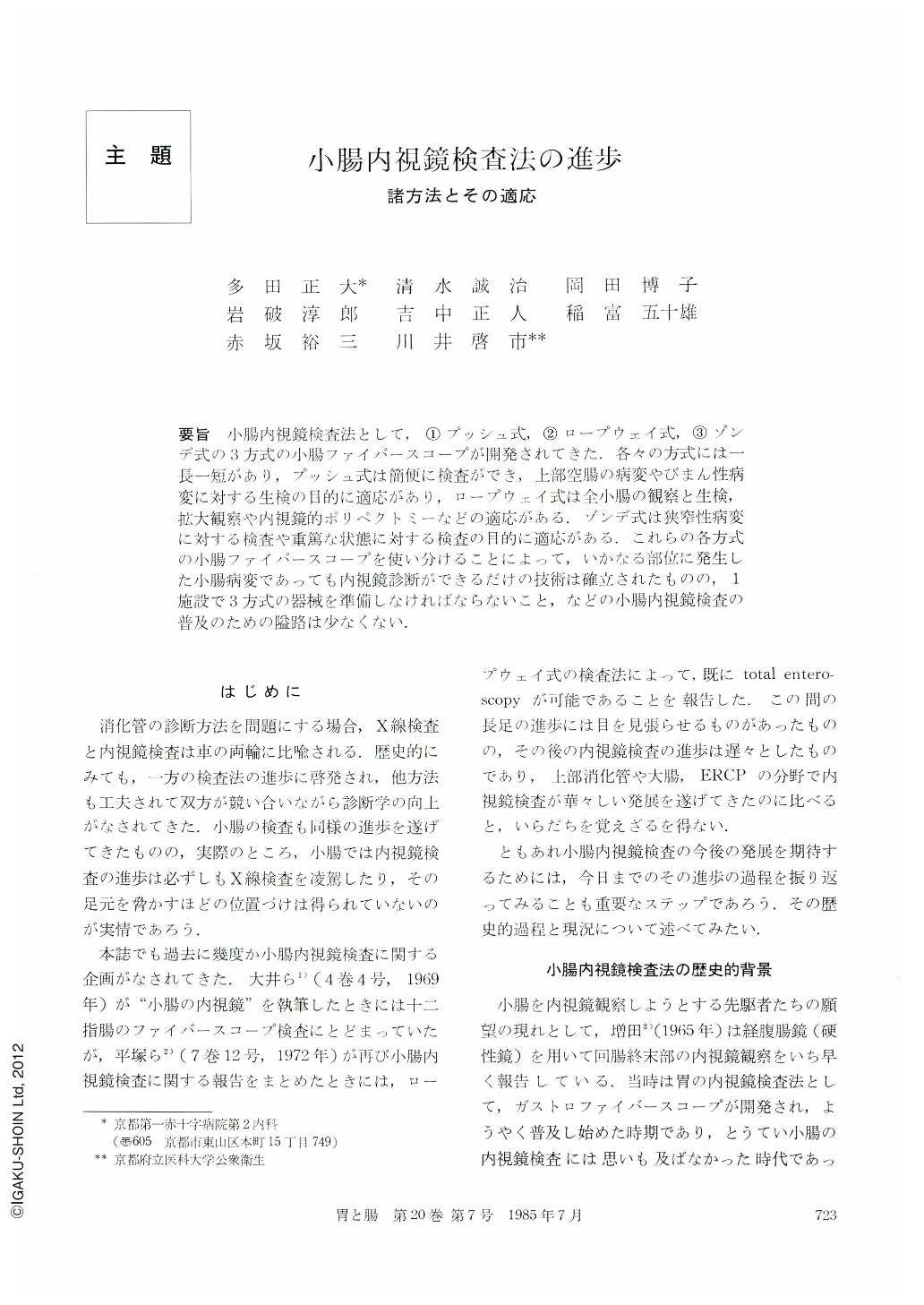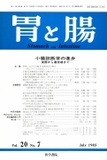Japanese
English
- 有料閲覧
- Abstract 文献概要
- 1ページ目 Look Inside
- サイト内被引用 Cited by
要旨 小腸内視鏡検査法として,①プッシュ式,②ロープウェイ式,③ゾンデ式の3方式の小腸ファイバースコープが開発されてきた.各々の方式には一長一短があり,プッシュ式は簡便に検査ができ,上部空腸の病変やびまん性病変に対する生検の目的に適応があり,ロープウェイ式は全小腸の観察と生検,拡大観察や内視鏡的ポリペクトミーなどの適応がある.ゾンデ式は狭窄性病変に対する検査や重篤な状態に対する検査の目的に適応がある.これらの各方式の小腸ファイバースコープを使い分けることによって,いかなる部位に発生した小腸病変であっても内視鏡診断ができるだけの技術は確立されたものの,1施設で3方式の器械を準備しなければならないこと,などの小腸内視鏡検査の普及のための隘路は少なくない.
Until now, small intestinal endoscopy has been developed along three main lines (a push type fiberscope, a rope-way type fiberscope and a sonde type fiberscope) and each type has both merits and demerits. The push type fiberscope is suitable for a lesion on the upper jejunum or biopsy in the case of a diffusely spread lesion. The rope-way type fiberscope is chosen for observation of the whole intestine, whereas the sonde type fiberscope is used for the examination of emergency cases of gastrointestinal bleeding, or in cases of poor general condition, or in cases of a stenoning lesion located at the distal parts of the small intestine where neither the push type scope nor the rope-way type can be introduced. Thus, we can observe small intestinal diseases sufficiently, wherever they arise in the small intestine, with a suitable scope, chosen according to the shape of the lesions or their location in the small intestine. Now we have a basis for correct diagnosis of small intestinal diseases by using these three types of fiberscopes. Further problems in enteroscopy are how to utilize it for studies of pathophysiology of the small intestine, and how to improve techniques to make it easier to use.

Copyright © 1985, Igaku-Shoin Ltd. All rights reserved.


